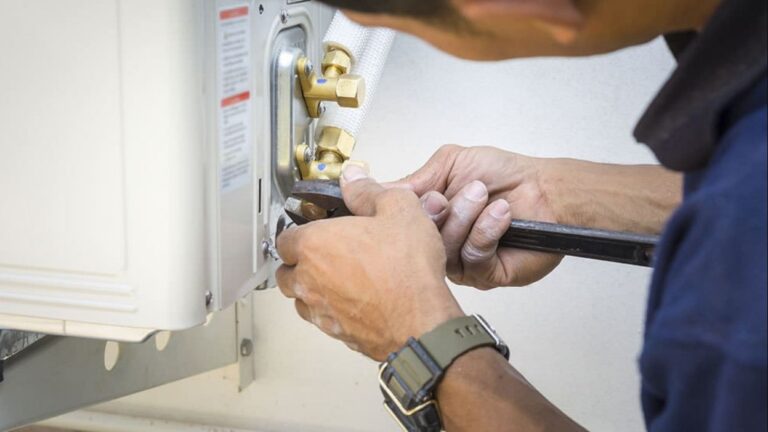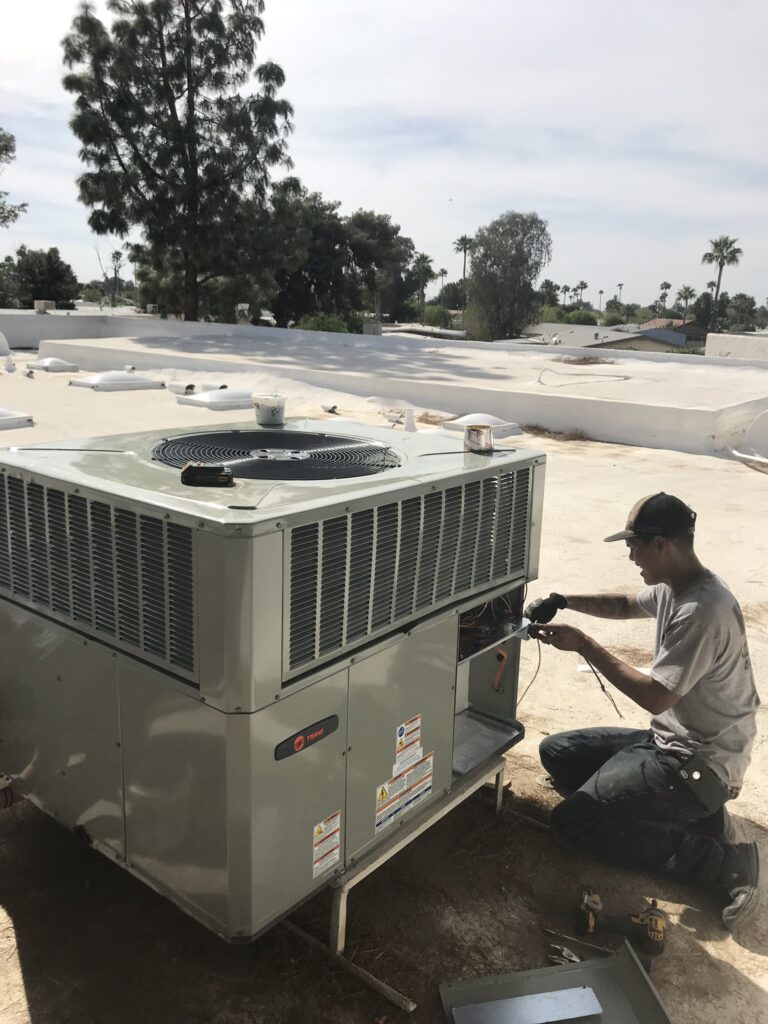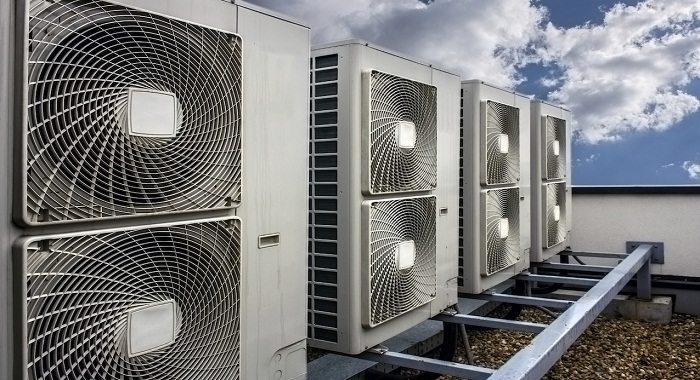What Is AC Short Cycling and How Do You Fix It?
Is your air conditioner turning on and off rapidly, leaving you uncomfortable and wondering what’s wrong?
This phenomenon, known as short cycling, can be a sign of a serious issue with your HVAC system. Normally, your air conditioner should run for 10 to 20 minutes to cool your home completely. However, if it shuts off within a couple of minutes, there’s likely a problem that needs to be addressed.
Short cycling can lead to increased energy bills and damage to your air conditioning unit. Understanding the causes and solutions is crucial to maintaining your system’s efficiency and longevity.
Key Takeaways
- Short cycling can cause premature wear on your HVAC system.
- Identifying the signs of short cycling is crucial for prompt action.
- Common causes include issues that can be fixed with DIY solutions.
- Some problems may require professional HVAC technician assistance.
- Fixing short cycling issues can improve energy efficiency and system lifespan.
Understanding AC Short Cycling
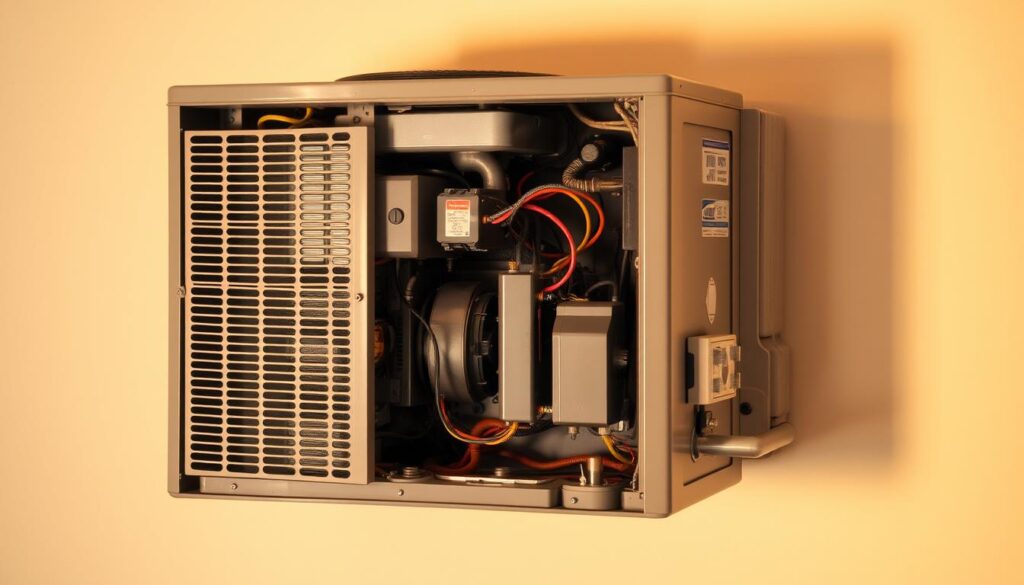
Understanding AC short cycling is crucial for maintaining your home’s comfort and your system’s efficiency. AC short cycling occurs when your HVAC system turns on and off more frequently than it should, failing to complete a full cooling cycle.
Definition of Short Cycling
Short cycling is a common issue that can quietly impact your system’s efficiency and your home’s comfort without you even realizing it. When your air conditioning system short cycles, it doesn’t run long enough to properly cool your home or dehumidify the air, leading to uncomfortable humidity levels.
As noted by HVAC experts, “A normal air conditioning cycle should last between 10-20 minutes to properly cool your home and maintain the desired temperature.” This prolonged cycle allows the refrigerant to absorb heat from inside your home and release it outside.
How a Normal AC Cycle Should Function
During a normal cycle, your air conditioning system operates in a continuous process, ensuring that your home is cooled effectively. The cycle involves the refrigerant changing state from liquid to gas and back to liquid as it absorbs and releases heat. This process is crucial for maintaining consistent temperatures throughout your home.
| Aspect | Normal AC Cycle | Short Cycling |
|---|---|---|
| Cycle Duration | 10-20 minutes | Less than 10 minutes |
| Dehumidification | Effective | Ineffective |
| System Strain | Normal | Excessive |
Short cycling puts excessive strain on your system’s components, particularly the compressor, which is designed to operate in complete cycles. This can lead to premature wear and tear, reducing the lifespan of your HVAC system.
Signs Your AC Is Short Cycling
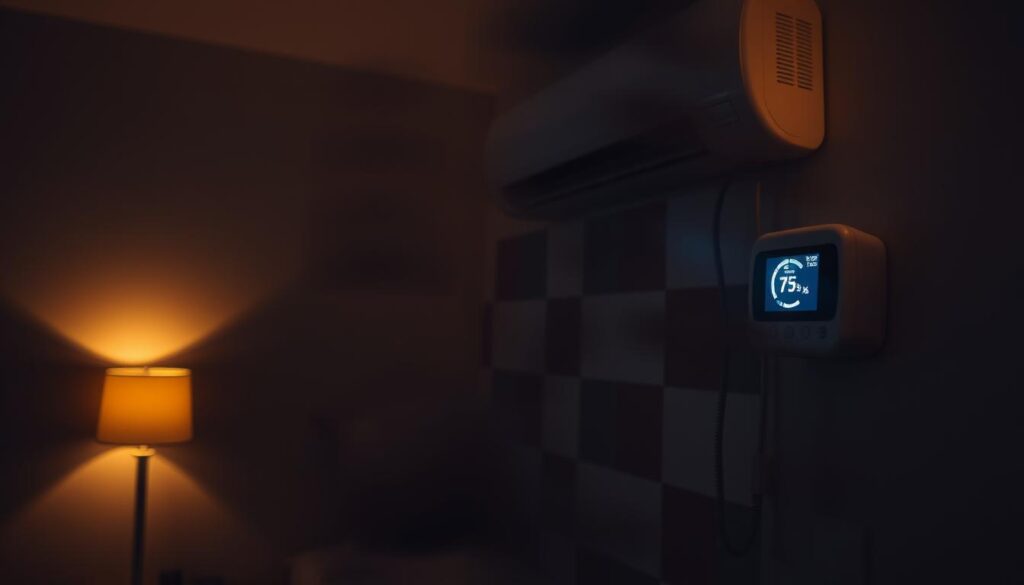
Recognizing the signs of short cycling is crucial to addressing the issue before it leads to more significant problems. Your air conditioner’s performance and overall health can be gauged by observing its behavior and identifying potential issues early on.
Frequent On and Off Cycles
The most obvious sign of short cycling is when your air conditioner runs for only a few minutes before shutting off, then restarts again shortly after. You might notice your AC turning on and off every 5-10 minutes instead of completing full cycles of 15-20 minutes. This frequent starting and stopping can be a clear indication that something is wrong with your AC’s operation.
Inconsistent Room Temperatures
temperatures throughout your house are a common symptom of short cycling. Some areas may feel too warm while others are properly cooled, indicating uneven cooling distribution. Your home may never seem to reach the temperature set on your thermostat, despite your air conditioner running frequently.
Higher Than Normal Energy Bills
Energy bills that are higher than normal for the season can indicate short cycling, as the system consumes more electricity during frequent startups. The constant starting and stopping creates noticeable noise patterns that differ from normal operation, and you might observe that your home feels more humid than usual because the AC isn’t running long enough to remove moisture from the air.
Common Causes of AC Short Cycling
Understanding the root causes of AC short cycling is crucial for effective troubleshooting. Several factors can contribute to this issue, ranging from simple maintenance oversights to more complex system problems.
Clogged or Dirty Air Filters
A clogged or dirty air filter is one of the most common causes of AC short cycling. When the air filter is blocked, it restricts airflow through your HVAC system, causing the unit to work harder and potentially overheat. This can trigger a shutdown as a safety measure to prevent damage to the system.
Refrigerant Leaks
Refrigerant leaks are another significant cause of short cycling. When refrigerant levels are low due to leaks, the air conditioner’s ability to absorb heat is compromised. This forces the system to work harder, potentially leading to short cycling as it struggles to maintain proper pressure levels.
Thermostat Issues
Thermostat issues can also cause short cycling. Problems such as improper placement near heat sources or in direct sunlight, faulty sensors, or calibration issues can lead to incorrect temperature readings. This can cause the AC to turn on and off more frequently than normal.
Frozen Evaporator Coils
Frozen evaporator coils can block heat transfer and trigger the system to shut down to prevent damage. This freezing can occur due to restricted airflow or refrigerant issues. When the evaporator coil is frozen, the system cannot operate efficiently, leading to short cycling.
Incorrectly Sized AC Unit
An incorrectly sized AC unit, particularly one that is too large for your home, can cool your space too quickly without properly dehumidifying. This rapid cooling can lead to short cycling as the system turns on and off more frequently.
In addition to these causes, other factors such as electrical problems, low refrigerant pressure, a malfunctioning compressor or motor, and blocked vents or improperly designed ductwork can also contribute to short cycling. Understanding these causes is essential for implementing the correct fix and preventing further damage to your HVAC system.
How to Fix a Clogged Air Filter
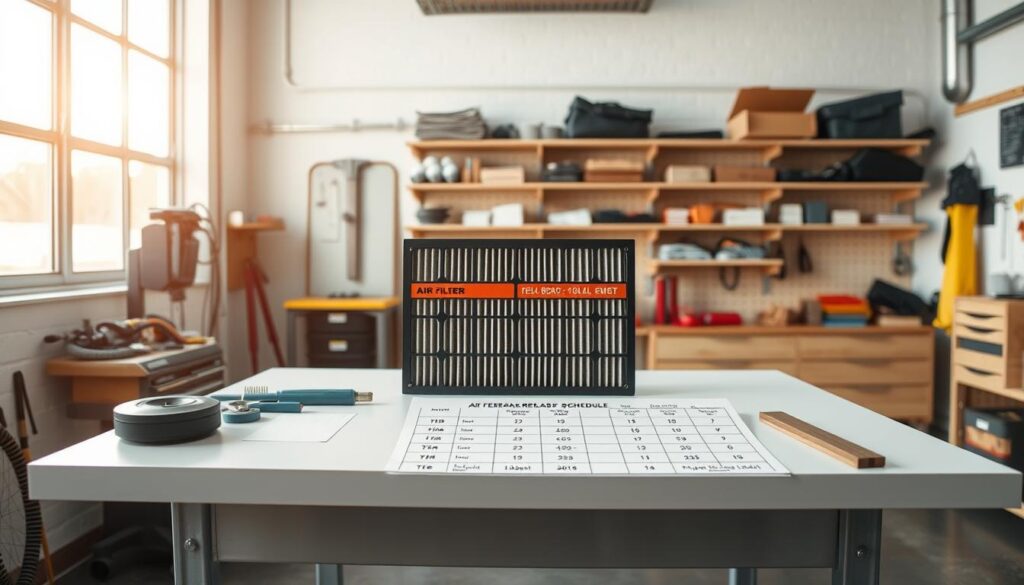
One of the most common causes of AC short cycling is a clogged or dirty air filter. When your air filter becomes clogged, it restricts airflow, causing your HVAC system to work harder and potentially leading to overheating and early shutdown.
Locating Your Air Filter
The first step in addressing a clogged air filter is to locate it. Typically, air filters are found in the return air duct or inside the air handler unit of your HVAC system. For central air conditioning systems, filters are commonly located where the return duct connects to the air handler, often in a basement, attic, or utility closet.
Cleaning vs. Replacing Filters
Determining whether to clean or replace your filter depends on its type. Disposable fiberglass filters should always be replaced, while some higher-end filters can be cleaned. Washable filters should be thoroughly rinsed with water in the opposite direction of airflow and allowed to dry completely before reinstallation.
Recommended Filter Replacement Schedule
Most standard 1-inch filters should be replaced every 30-90 days, depending on factors like pets, allergies, and general air quality in your home. Households with pets or allergy sufferers should replace filters more frequently, typically every 30-45 days.
To maintain optimal system performance, consider setting calendar reminders or subscribing to filter delivery services to ensure a regular replacement schedule.
Addressing Thermostat Problems
The thermostat plays a critical role in regulating your HVAC system, and problems with it can lead to short cycling. A faulty thermostat may misread temperatures or send incorrect signals to the air conditioning system, causing it to turn on and off repeatedly.
Checking Thermostat Placement
Thermostat placement is crucial for proper system function. It should be installed on an interior wall, away from direct sunlight, drafts, doorways, windows, and heat sources. Check if your thermostat is located near air vents, appliances, lamps, or electronics that could affect its temperature readings and cause short cycling.
Calibrating Your Thermostat
Many thermostats can be calibrated to improve accuracy. For digital thermostats, calibration typically involves accessing a menu setting that allows you to adjust the temperature offset by a few degrees. Older mechanical thermostats may have a calibration screw that can be carefully adjusted with a small screwdriver after removing the cover.
When to Replace Your Thermostat
Consider replacing your thermostat if it’s more than 10 years old, consistently provides inaccurate readings, or lacks modern energy-saving features. Upgrading to a programmable or smart thermostat can not only resolve short cycling issues but also improve energy efficiency and comfort. Signs that your thermostat needs replacement include erratic temperature swings, unresponsive buttons, or blank displays.
Dealing with Frozen Evaporator Coils
Dealing with frozen evaporator coils is crucial for maintaining the efficiency and longevity of your air conditioning system. Frozen evaporator coils are a common cause of AC short cycling and can lead to significant issues if not addressed promptly.
Safely Thawing the Coils
The first step in addressing frozen evaporator coils is to turn off your air conditioning system completely to allow the ice to melt naturally. Never attempt to chip or scrape ice off the coils, as this can damage the delicate fins and potentially cause refrigerant leaks. Thawing typically takes 24 hours, but you can speed up the process by running just the fan (not the cooling system) to circulate air over the frozen coils.
Cleaning Evaporator Coils
Once thawed, inspect the evaporator coils for dirt and debris that may have contributed to the freezing. Cleaning evaporator coils requires careful attention; use a soft brush to remove loose debris, then apply a commercial no-rinse coil cleaner designed for HVAC systems. For heavily soiled coils, consider hiring a professional HVAC technician.
Preventing Future Freezing
To prevent future freezing, ensure proper airflow through regular filter changes and keep supply and return vents unobstructed. Maintaining adequate refrigerant levels is also crucial, as low refrigerant levels are a common cause of evaporator coil freezing. Annual professional maintenance can help identify potential issues before they lead to freezing and short cycling.
When to Call a Professional HVAC Technician
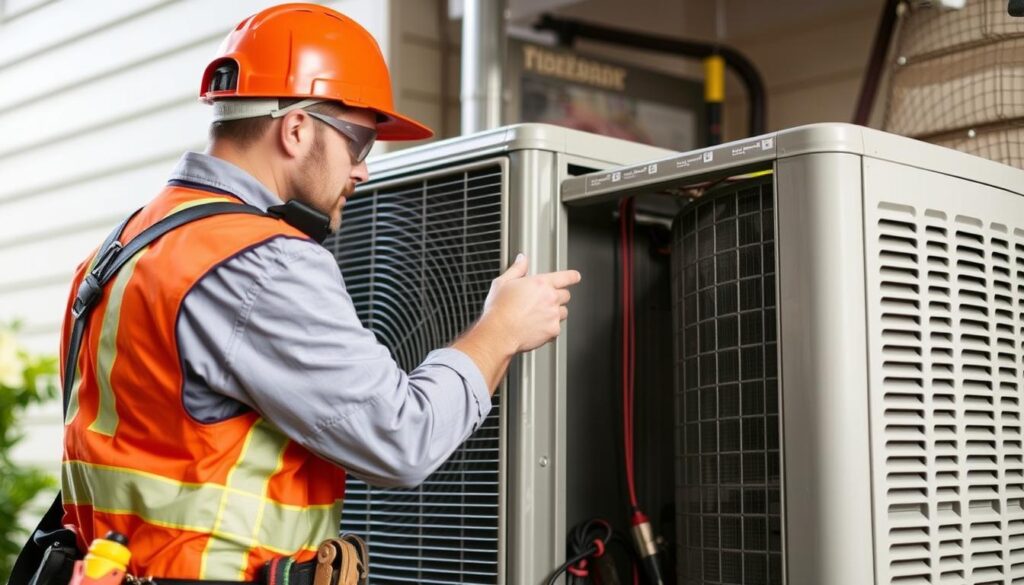
Short cycling can be a sign of a deeper issue with your air conditioner, requiring the expertise of a professional HVAC technician. While some causes of short cycling can be addressed by homeowners, certain issues require professional HVAC services to diagnose and repair safely and effectively.
Refrigerant Leak Issues
Refrigerant leaks are a serious issue that should always be handled by certified technicians. Refrigerant is regulated and potentially harmful, requiring special equipment to detect and repair leaks. A professional can accurately measure refrigerant levels, locate leaks using specialized detection equipment, and properly recharge the system according to manufacturer specifications.
Electrical Problems
Electrical problems in your air conditioner, including faulty wiring, damaged capacitors, or control board issues, pose safety risks and require professional diagnosis and repair. HVAC technicians have the proper tools and training to safely test electrical components, identify the source of electrical failures, and make repairs without risking personal injury or further system damage.
Compressor or Motor Failures
Compressor or motor failures are major issues that typically require professional intervention, as these components are the heart of your air conditioning system. Signs of compressor problems include unusual noises, failure to start, or frequent system shutdowns – a technician can determine if repair or replacement is the most cost-effective solution.
When selecting an HVAC technician, look for proper licensing, good reviews, experience with your specific type of system, and upfront pricing policies. Regular professional maintenance can prevent many causes of short cycling and extend the life of your air conditioner, making it a worthwhile investment in your home comfort system.
Preventing Future AC Short Cycling Problems
To prevent future AC short cycling problems, it’s essential to adopt a proactive approach to maintaining your air conditioning system. Regular maintenance is key to ensuring your system operates smoothly and efficiently.
Regularly scheduling professional HVAC service calls at least twice a year can significantly reduce the likelihood of short cycling. During these visits, technicians will inspect critical components such as air filters, evaporator coils, and blower motors. A thorough cleaning and inspection can make a significant difference in the system’s performance.
Some crucial maintenance tasks include changing air filters every 1-3 months, keeping the area around the outdoor condenser unit clear, and ensuring proper airflow throughout your home. It’s also important to have your ductwork inspected for leaks or blockages and to consider installing a programmable thermostat.
By taking these steps and addressing minor issues promptly, you can prevent short cycling and ensure your air conditioning system provides reliable cooling for years to come. Proper maintenance not only enhances the system’s efficiency but also prolongs its lifespan.


